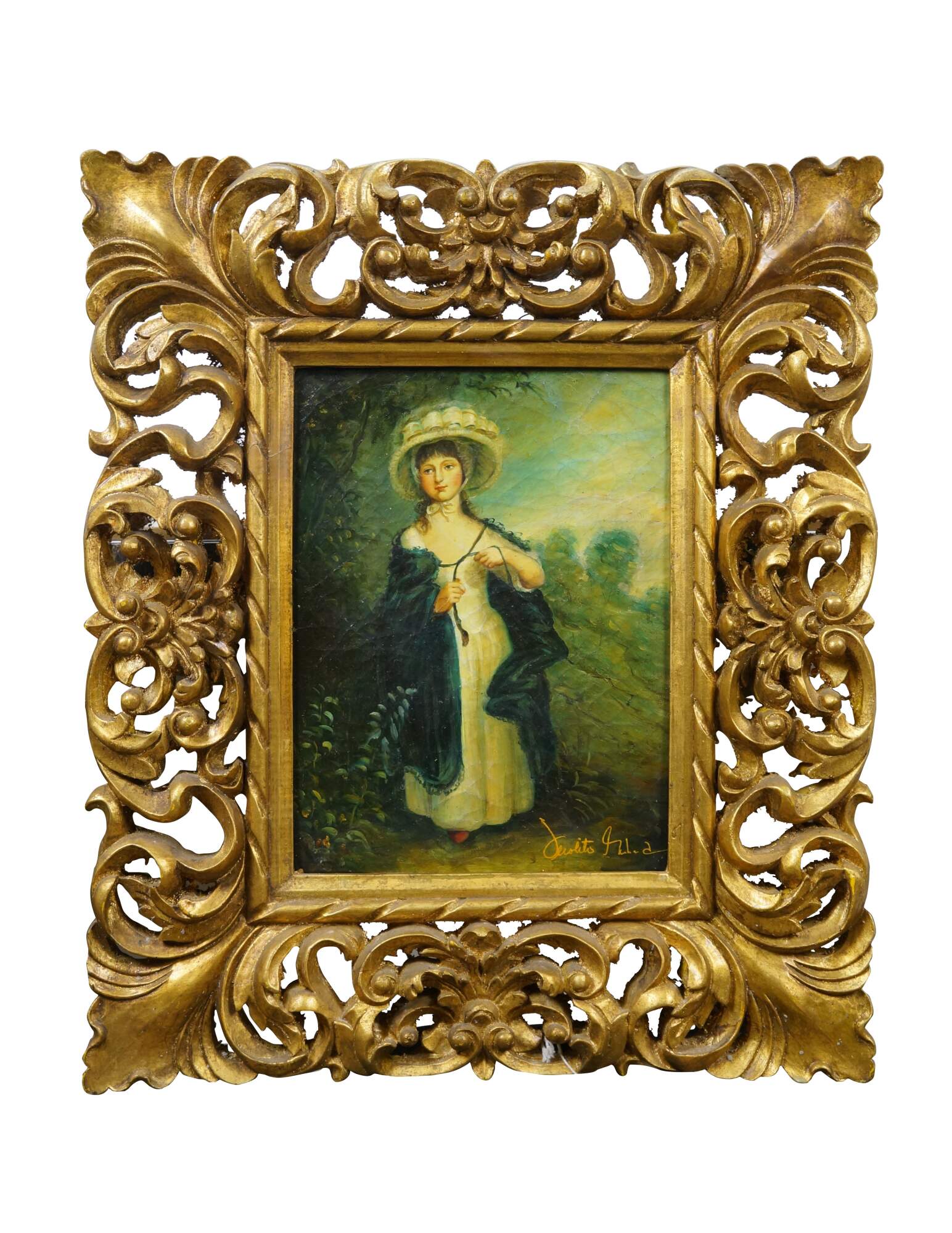
Shipping:
Free Shipping Included
Delivery:
Estimated 2-15 Business Days
Payments:
Credit Card, Check, Cash, PayPal, Apple Pay, Venmo
Returns:
30 Days 100% Money Back Guarantee, Buyer Pays Return Shipping
Description
Late 20th century oil on linen portrait painting after "Miss Elizabeth Anne Haverfield" by Thomas Gainsbourough. Shows a young girl in a white dress, large hat/bonnet, and pulling the ties of a black cloak. Signed, lower right. Gilt composite frame with pierced foliate and acanthus leaf design; very heavy.
"Miss Elizabeth Anne Haverfield (1776–1817) was the daughter of the Superintendent Gardener of Kew, John Haverfield of Haverfield Lodge. Her portrait is a fine example of Gainsborough’s late style. The attention of the viewer is attracted by the spontaneous twisting pose of the sitter set against an evocative, fluid, landscape background. Gainsborough’s lively, but objective, portrayal of Miss Haverfield may be contrasted with Reynolds’s more overtly sentimental portraits of children, as seen in the portrait of Miss Jane Bowles. The picture remained at Haverfield Lodge until 1850."
"Thomas Gainsbourough - (Baptised Sudbury, Suffolk, 14 May 1727; died London, 2 August 1788). English painter (of portraits, landscapes, and fancy pictures), draughtsman and occasional printmaker, one of the most individual geniuses in British art. He showed artistic talent from an early age and around 1740 (aged about 13) he moved to London, where he studied with Gravelot and perhaps also with Hayman. In 1748 he returned to Sudbury and in 1752 he set up as a portrait painter in Ipswich, the largest town in the county. His work at this time consisted mainly of heads and half-lengths, but he also produced some small portrait groups in landscape settings, including the celebrated Mr and Mrs Andrews (c.1749, NG, London), remarkable for its ‘dewy freshness’ (Ellis Waterhouse). In addition he painted pure landscapes (Cornard Wood, 1748, NG, London). His patrons in Ipswich were mainly the merchants of the town and local squires, but in 1759 he moved to Bath, where he worked for much more fashionable clients, many of them wealthy visitors to the spa town. From now on all his portraits were life-size and many of them were full-lengths, in which he cultivated a free and elegant manner (Mary, Countess Howe, c.1764, Kenwood House, London)." (Art UK)
Condition
Good OVerall - Crazing/spots to paint; gentle wear to frame
Dimensions
24" x 1.5" x 28" (Width x Depth x Height)
You May Also Like